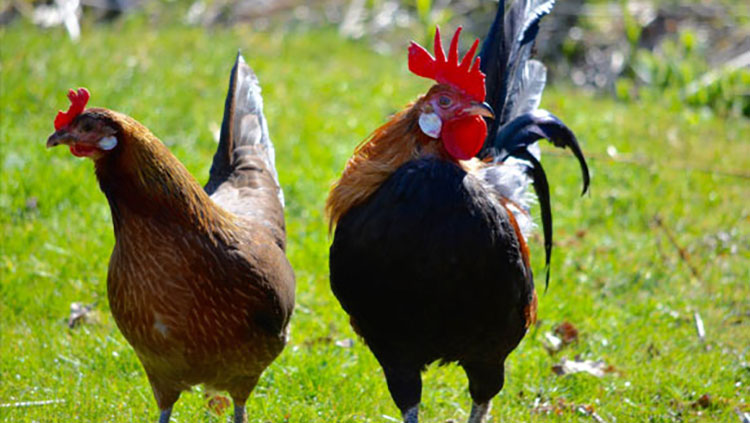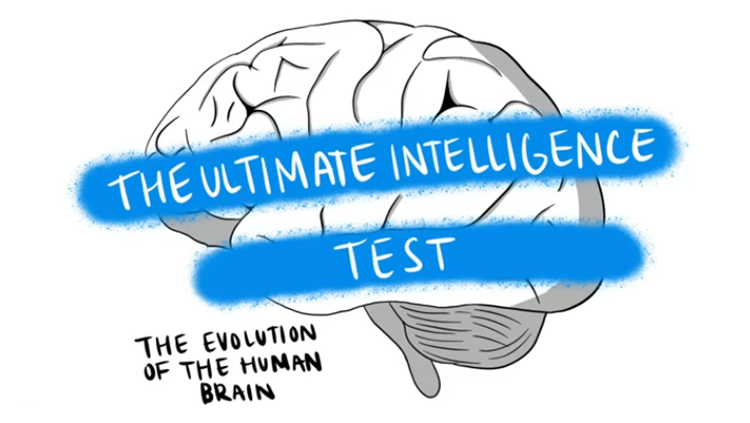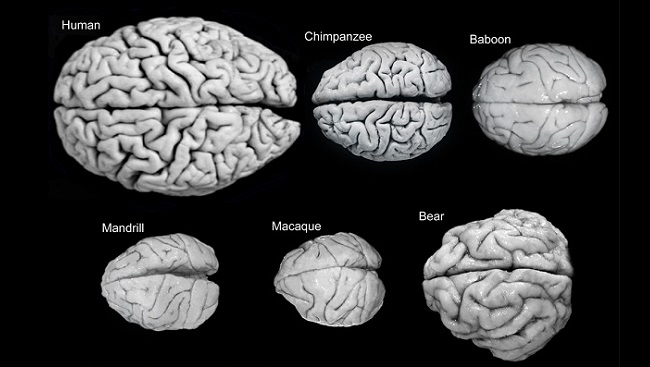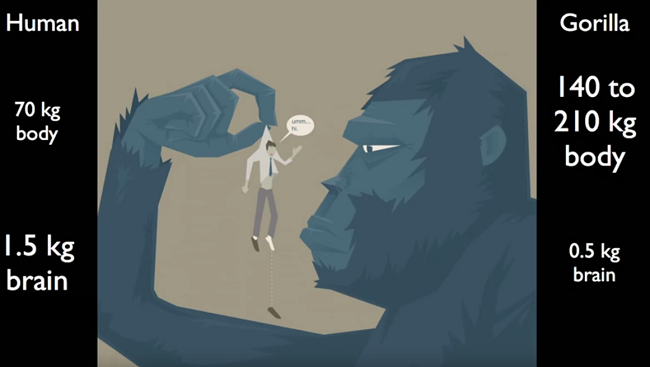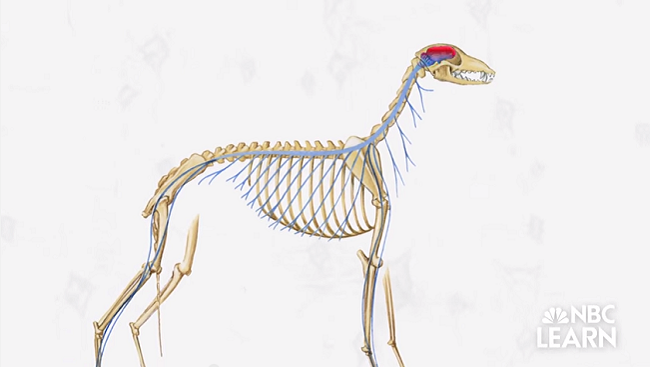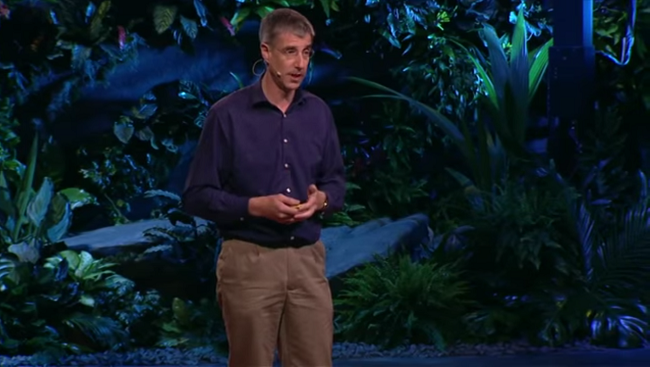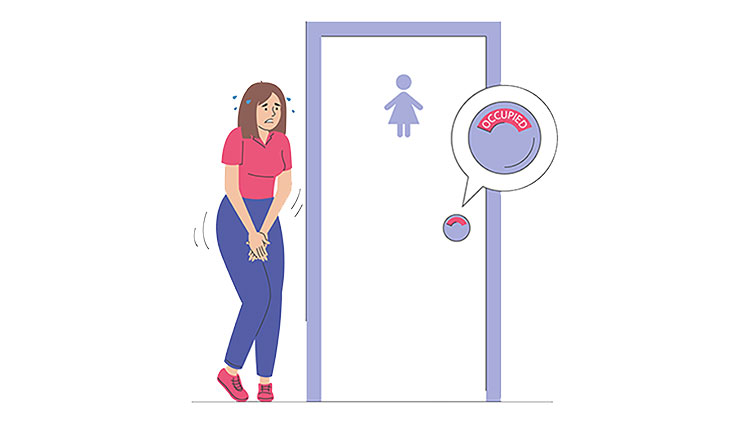Brain Evolution: Searching for What Makes Us Human
- Published9 Apr 2015
- Reviewed9 Apr 2015
- Author Alexis Wnuk
- Source BrainFacts/SfN

As humans, we do things that no other animal does. We build cities. We write sonnets. We even land rovers on Mars. What is it about the human brain that enables us to do these things? What unique features can account for our cognitive abilities? In many ways, the study of human brain evolution is the search for these features and how they came about.
Bigger Brains
“Brain size expansion is one of the most extraordinary features of human brain evolution,” says Chet Sherwood, an anthropologist at George Washington University who studies primate brain evolution. Modern humans have brains that are three times bigger than those of our closest living relatives, chimpanzees, suggesting that something special occurred in our evolution.
Scientists have learned that a tremendous amount of brain growth took place in the human lineage. By studying the fossilized skulls of human ancestors, scientists have been able to estimate the size of the brains the skulls once housed. The skulls can be filled with a casting material like latex to create a rough model of the brain called an endocast, or, more commonly, scientists use computerized tomography (CT) to scan the skull and create a digital representation of the brain. This work has revealed that, over the last three million years, brain size roughly tripled in the human lineage, from about 450 grams (or about the size of a large orange) in our ancestor Australopithecus afarensis (the same species as the famous Lucy fossil) to between 1,300 and 1,400 grams in modern humans.
All of this happened, Sherwood says, without much of a change in body size. “Brains don’t just do that for no reason in evolution. Evolution is frugal and cost-effective, and brain tissue has extraordinary metabolic expense,” he says. “There must have been some adaptive value to brain size increase.”
However, brain size varies among humans. Having a bigger brain doesn’t mean that you’re better at the aspects of cognition that we consider uniquely human, like language and understanding others’ mental states, Sherwood says. “So brain size cannot be the single explanation for what we can do with our neural machinery,” he says.
Cortical Expansion
If brains tripled in size, does that mean that all areas of the brain grew three times larger? Or did some areas grow more than others? Endocasts are helpful for determining overall brain size, but they offer little insight about internal brain anatomy and organization. So, to answer these questions, scientists compare the brains of humans to those of other living species, including our closest relatives like chimpanzees. When scientists see that chimp and human brains share a certain trait, they can infer that our common ancestor also had this trait. Any observed differences, however, point to evolutionary changes that occurred after the chimp and human lineages split.
Work in this area has revealed that most of the increase in brain size is due to an expansion of the cerebral cortex — the wrinkled outer layer of the brain that plays a key role in thought, perception, and language — and the underlying nerve fibers. The parts of the cerebral cortex that have grown the most are the association areas. These areas integrate information from other regions and are involved in higher cognitive functions like planning and abstract thinking. On the other hand, areas that are primarily devoted to one function, like the motor cortex or visual cortex, haven’t grown as much.
Networking Opportunity
A bigger cortex means more neurons, and scientists at the Federal University of Rio de Janeiro have counted just how many neurons the human cortex has: 16 billion. They also found that, in primates, the number of neurons increases in direct proportion to brain size, indicating that as brain size tripled over the last three million years, the number of neurons also tripled.
As the brain expanded to reach the size we have now, it never strayed from this proportional relationship. “We never stopped being a primate,” says Suzana Herculano-Houzel, who led the study. The human brain doesn’t break any of the primate trends, but that doesn’t diminish the fact that we a have a huge number of neurons in the brain and in the cortex in particular, she says. “When you’re adding neurons to the cortex, you have the opportunity to create new patterns of connectivity and new functions in the expanded brain areas,” she says. This, she adds, is the simplest explanation for the massive increase in cognitive capacity that we have.
Room for Growth
The human brain has a lot of growing to do before it reaches its extraordinary size, Sherwood says, and another key feature of human brain evolution is that a larger fraction of this growth occurs outside of the womb. At birth, the human brain is only 27 percent of its adult size. Compare that to a newborn chimp whose brain is 36 percent of its adult size, or a macaque monkey whose brain is already 70 percent developed at birth. How does the human brain get to be so big?
In 2004, researchers at the University of Illinois sought to answer that question. They charted the patterns of brain growth for humans, chimpanzees, and five other primate species and found that both humans and chimpanzees reached adult brain size around age five or six. But they differed drastically when it came to the rate of brain growth: at birth, the human brain was growing six times as fast as the chimp brain.
Despite declining after birth, the rapid growth rate of the human brain continues for the first year of life. “It’s as though our newborns and infants still have fetal brains growing in the outside world,” Sherwood says.
A Longer Window of Development
While humans reach adult brain size in childhood, brain development continues for decades. For instance, during development, nerve fibers become covered with myelin, a fatty substance that insulates the fibers and speeds up the transmission of electrical signals. This process is vital for neurons forming connections during development, and Sherwood’s research has demonstrated that it occurs more slowly in humans compared to other primates. When comparing human brains to chimpanzee brains, ranging in age from infancy to adulthood, they found that, at birth, the human brain had less than 2 percent of adult levels of myelin, while the chimp brain had 20 percent of adult myelin levels at birth. And the disparity persisted, with chimp brains becoming fully myelinated around puberty and human brains continuing to add myelin until about age 30.
The results suggest that humans evolved a prolonged schedule of brain development. This is important because myelination is guided by stimulation and learning: when neurons are more active, more myelin is added to the fibers between them, which strengthens the connections. Humans have a longer window of time to strengthen these connections, meaning that there are more opportunities for our brains to be shaped by culture, socialization, and environment.
And, compared to other primates, humans are more dependent on culture, interaction, and group identity. Many scientists think that this increased social complexity could be one of the driving forces behind the changes that occurred in human brain evolution. “The idea is that the more that human ancestors were dependent on culture and the processes of social learning, the more that success and fitness required having the kind of brain machinery that could sustain ever more complex culture,” Sherwood says.
Studying human brain evolution is a way of understanding these kinds of connections between our biology and what we can do. In short, Sherwood says, it’s a way of understanding ourselves.
CONTENTPROVIDEDBY
BrainFacts/SfN
References
Florio M, Albert M, Taverna E, Namba T, Brandl H, et al. Human-specific gene ARHGAP11B promotes basal progenitor amplification and neocortex expansion. Science. February 26 (2015).
Gabi M, Neves K, Masseron C, Ribeiro P, Ventura-Antunes L, et al. Human and non-human primates have similar distributions of neurons along the cerebral cortex, including prefrontal cortex. Poster presented at the meeting of the Society for Neuroscience, Washington, DC (2014).
Herculano-Houzel S. The human brain in numbers: a linearly scaled-up primate brain. Frontiers in Human Neuroscience. 3(31) 1-11 (2009).
Holloway RL, Sherwood CC, Hof PR, Rilling JK. Evolution of the brain in humans — paleoneurology. In Binder MD, Hirokawa N, Windhorst U (Eds.) Encyclopedia of Neuroscience. (2009).
Leigh SR. Brain growth, life history, and cognition in primate and human evolution. American Journal of Primatology. 62:139-164 (2004).
Miller DJ, Duka T, Stimpson CD, Schapiro SJ, Baze WB, et al. Prolonged myelination in human neocortical evolution. Proceedings of the National Academy of Sciences USA. 109(41): 16480-16485 (2012).
Preuss TM. The human brain: rewired and running hot. Annals of the New York Academy of Sciences. 1225(Suppl 1): E182-E191 (2011).
Robson SL, Wood B. Hominin life history: reconstruction and evolution. Journal of Anatomy. 212(4): 394-425 (2008).
Sherwood CC, Subiaul F, Zawidzki TW. A natural history of the human mind: tracing evolutionary changes in brain and cognition. Journal of Anatomy. 212(4): 426-454 (2008).



